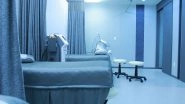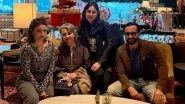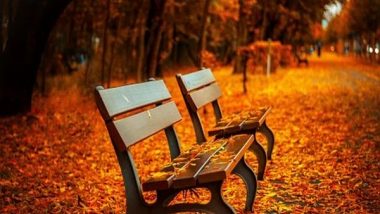Philadelphia, May 12: Parks played an important role for people seeking respite from the toll of social isolation during the pandemic, and they did so without increasing the spread of COVID-19, according to new research from Drexel University.
The study looked at how people used 22 parks in Philadelphia and New York during the height of the pandemic and it found no strong correlation between park use and the number of confirmed cases in surrounding neighbourhoods. Screaming Not Allowed! Japanese Amusement Parks Issue Guidelines Asking Visitors Not to Scream on Roller-Coasters to Prevent Spread of Coronavirus.
Published in the Journal of Extreme Events, Drexel's study "Urban Park Usage During the COVID-19 Pandemic" surveyed park visitors over a three-month period from May to July 2020 at small and mid-size parks in New York and Philadelphia. And it compared park usage numbers to rates of COVID-19 transmission in the areas directly surrounding the parks.
"Despite early speculation that parks could become gathering points for large groups of people and contribute to the transmission of COVID-19, our research did not find a strong correlation between COVID-19 cases in neighbourhoods near parks and the number of people using them," said Franco Montalto, PhD, a professor in Drexel's College of Engineering who led the research team.
In the early months of the pandemic last spring, public health guidance recommended avoiding gathering in large groups outside. As a result, many municipalities closed public playgrounds with high-touch areas, like swings and sliding boards, out of an abundance of caution. But most public parks remained open and, according to the study, those in Philadelphia and New York continued to be used throughout the pandemic.
The researchers selected 22 small, urban parks, 15 in Philadelphia and seven in New York City, located in or near neighbourhoods representing a variety of levels of relative population density and vulnerability, according to Census data and the CDC's Social Vulnerability Index -- a tool that uses Census data to identify communities that could need support during natural disasters and crisis situations. This allowed the team to account for these factors when examining the possibility of a link between park use and COVID-19 transmission.
What it found is that, regardless of the city or social vulnerability of the adjacent neighbourhoods, in areas that were more densely populated, parks tended to see more use. But this increased usage did not equate to the higher transmission of COVID-19 -- which was more closely associated with the vulnerability of the neighbourhoods, according to the study.
"Though a more extensive epidemiological study is required, this research provided no evidence that park usage contributed to COVID-19 spread," they wrote. The number of park visitors increased with density in Philadelphia, as did the number of confirmed COVID-19 cases.
Citizen scientists assigned to each park observed how much and in what ways they were used and whether or not visitors were engaged in activities deemed to be "high-risk" for transmitting COVID-19, such as playing contact sports, not wearing a mask, or coughing without covering.
Overall, only a small percentage of park users -- 22.7 per cent in Philadelphia and 1.2 per cent , in New York -- never wore masks, according to the study. The majority of park users that were observed did not engage in high-risk behaviours -- only 0.7 per cent in Philadelphia and 0.9% in New York were observed frequently coughing or spitting without covering their mouths. And just 1.6% and 12.9 per cent of people were observed frequently participating in contact sports in Philadelphia and New York City, respectively.
"While the municipalities that did close parks during the pandemic likely did so out of an abundance of caution, our work shows no evidence to support closing the parks during the pandemic," Montalto said. "That person continued to visit parks during lockdowns and the early stages of the pandemic underscores the evident value of parks as a respite for urban residents during the early phases of the pandemic."
(The above story is verified and authored by ANI staff, ANI is South Asia's leading multimedia news agency with over 100 bureaus in India, South Asia and across the globe. ANI brings the latest news on Politics and Current Affairs in India & around the World, Sports, Health, Fitness, Entertainment, & News. The views appearing in the above post do not reflect the opinions of LatestLY)













 Quickly
Quickly












